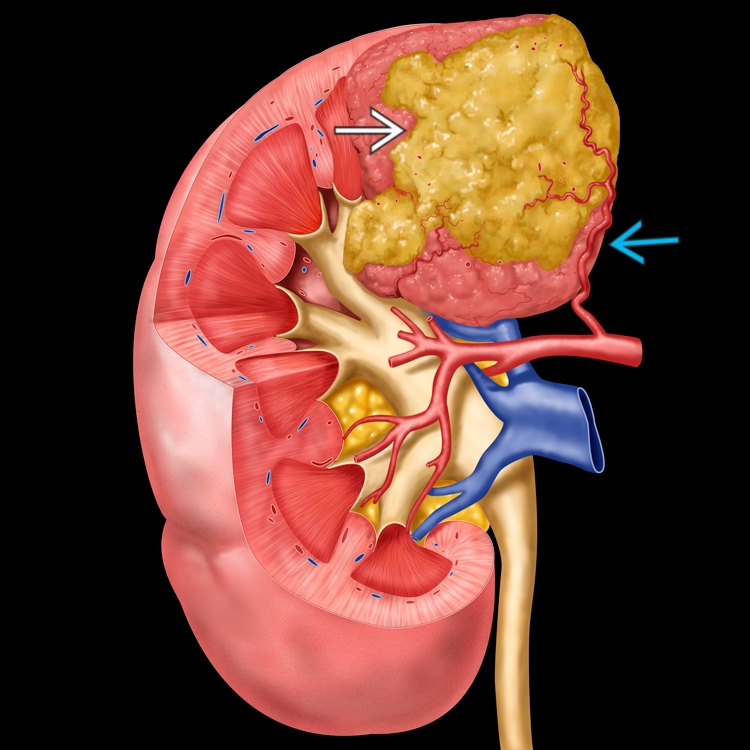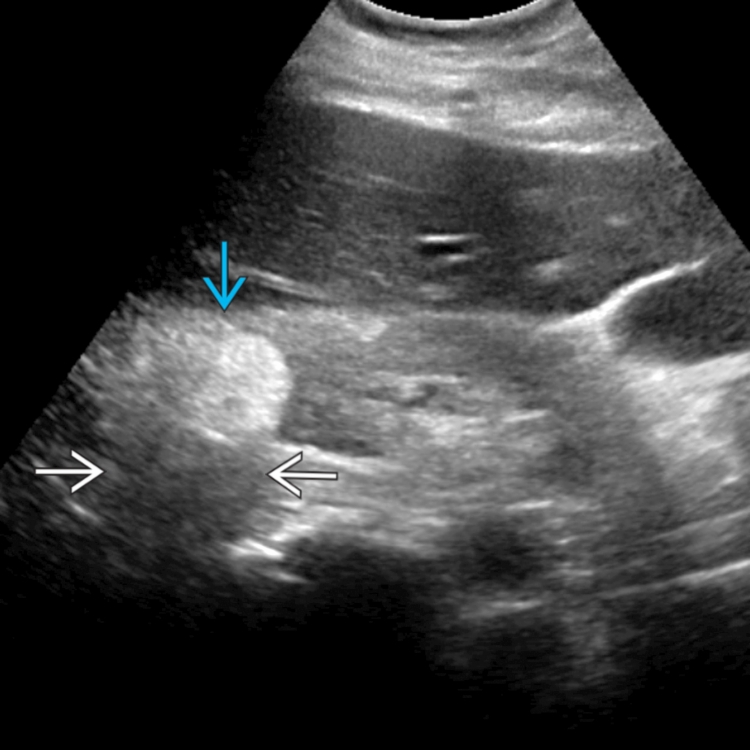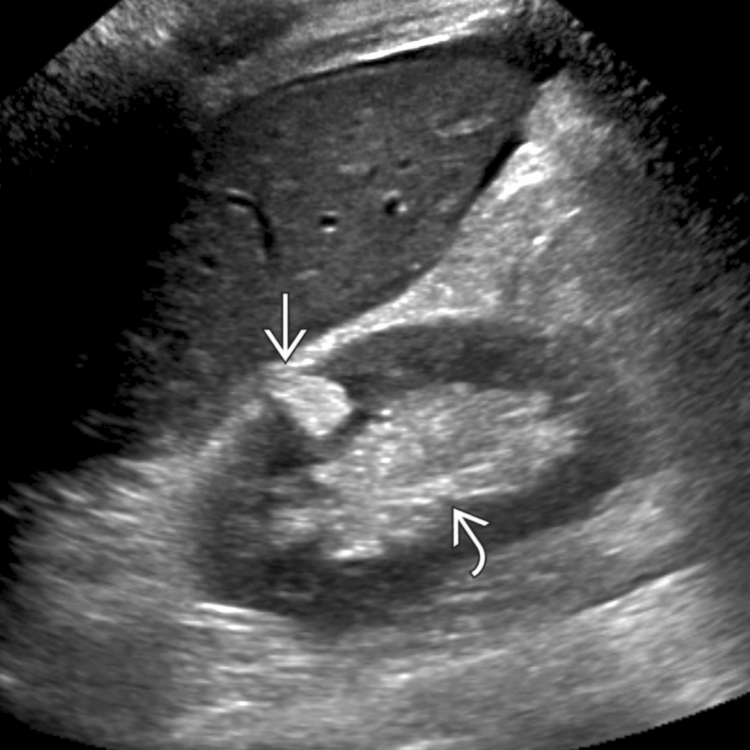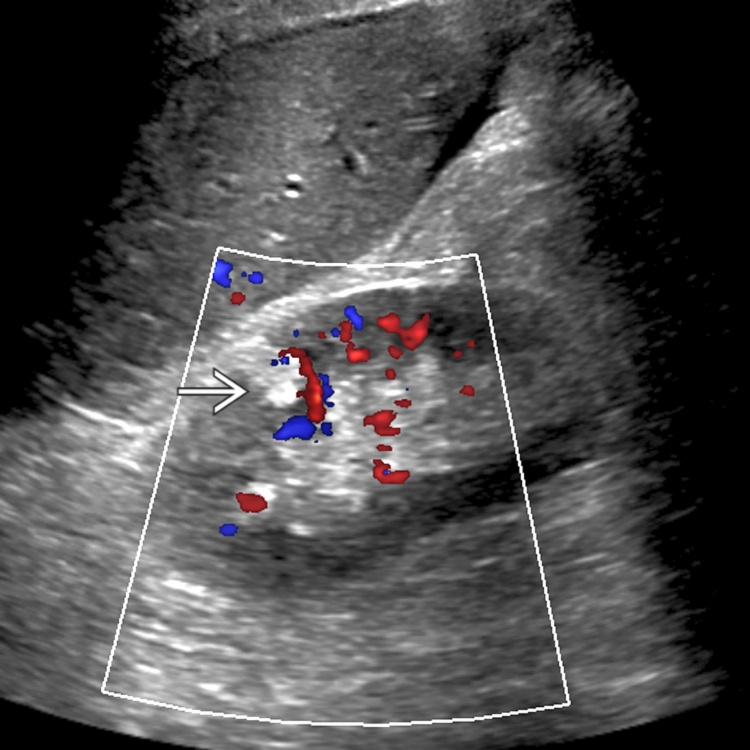KEY FACTS
Imaging
- •
Discrete renal mass with varying amounts of dysmorphic blood vessels, smooth muscle, and mature adipose tissue
- •
Variable size, can be very large
- •
Single or multiple
- •
Classic angiomyolipoma (AML): Lipid-rich echogenic mass with posterior acoustic shadowing
- •
Fat-poor subtype (“AML with minimal fat”): Usually hyperechoic but fat not detected by CT or MR
- •
CT/MR more specific than US
- •
Color Doppler: Absent from fatty component, may be present in soft tissue/vascular components
Top Differential Diagnoses
- •
Renal cell carcinoma
- •
After acute hemorrhage, renal cell carcinoma or AML may be indistinguishable if no fat is detected
- •
Wilms tumor
- •
Renal oncocytoma
- •
Deep cortical scar with fat
- •
Cortical milk of calcium cyst
Pathology
- •
Can be classified radiologically into “classic” and “fat-poor” subtypes
Clinical Issues
- •
Most common benign solid renal neoplasm
- •
80% sporadic; prevalence: 0.2%; 4th-6th decades; usually unilateral and solitary; F:M = 3:1
- •
20% associated with tuberous sclerosis complex; mean age: younger; 55-75% of these patients will have AML by 3rd decade; any subtype of AML, multiple and bilateral
- •
Tend to grow faster when > 4 cm
- •
Size > 3-4 cm or aneurysm size > 5 mm → bleeding
- •
Majority detected as incidental finding on imaging and asymptomatic, during screening of tuberous sclerosis
- •
Can present with spontaneous renal hemorrhage, which may obscure mass
- •
Sporadic form more common in females than males
- •
AML associated with tuberous sclerosis complex more likely to need some form of treatment
Scanning Tips
- •
Echogenic masses detected by US should be further evaluated with CT or MR to confirm presence of fat
- •
US may be used for screening and monitoring of AML, depending on body habitus
 components. Note the tortuous feeding artery
components. Note the tortuous feeding artery  arising from the main renal artery.
arising from the main renal artery.
 in the upper pole of the kidney. Note the posterior acoustic shadowing
in the upper pole of the kidney. Note the posterior acoustic shadowing  .
.
 in the anterior renal cortex of the right kidney. The echogenicity of the AML is similar to the renal sinus fat
in the anterior renal cortex of the right kidney. The echogenicity of the AML is similar to the renal sinus fat  .
.
 . Color flow is not expected in homogeneous lipid-rich AML.
. Color flow is not expected in homogeneous lipid-rich AML.
 in the anterior midright kidney. There is no posterior acoustic shadowing. This was confirmed with NECT.
in the anterior midright kidney. There is no posterior acoustic shadowing. This was confirmed with NECT.
Stay updated, free articles. Join our Telegram channel

Full access? Get Clinical Tree








